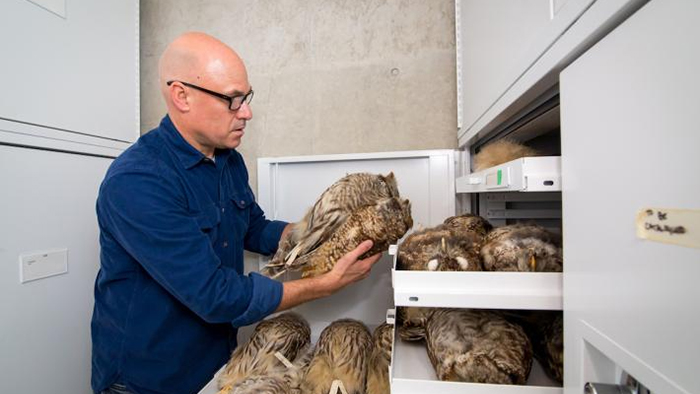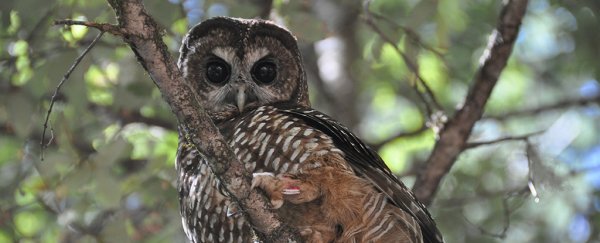Something is poisoning groups of owls in the US, including endangered species, and scientists think illegal marijuana farms are to blame.
More specifically, a rat poison used at these farms is thought to be responsible, passed on as owls feed on the rats contaminated by anticoagulant poisons. The rats get drawn to the aromatic marijuana plants, and then become toxic.
The toxins interfere with the blood's ability to form clots, leading to internal bleeding, and the researchers want to see more done to restrict the use of this rodenticide, which is banned for use with marijuana cultivation.
"Spotted owls are inclined to feed along forest edges. Because grow sites break apart these forest landscapes, they are likely source points for exposure," says lead researcher Mourad Gabriel, from the University of California, Davis.
 (California Academy of Sciences)
(California Academy of Sciences)
While marijuana is now legal in California, various regulations place strict limits on how it can be grown – limits that cover farming sites and the chemicals allowed to be used.
But more and more private timberland is now being converted into marijuana farms, many of which seem to have no regard for these rules and regulations.
Researchers focused their efforts around various unpermitted sites in the counties of Humboldt, Mendocino, and Del Norte, sometimes working alongside police.
An analysis of owl carcasses found that 7 out of the 10 collected northern spotted owls tested positive for rat poison, as did 34 out of 84 barred owls.
With the tissue samples taken a long way from any urban or agricultural developments, and with rodents the main food source for these owls, the finger of blame is pointed squarely at unauthorised use of rat poison on marijuana farms.
Northern spotted owls are listed as endangered at both federal and state levels, making it vital that the use of this rat poison is quickly stamped out.
But with marijuana now legal, the number of these unregulated sites is likely to continue to rise. Gabriel estimates that there are up to 15,000 such sites in Humboldt County alone, with only a handful operating within the guidelines of the law.
"When you have thousands of unpermitted grows and only a handful of biologists that regulate that for multiple counties, we're deeply concerned that there aren't sufficient conservation protective measures in place," says Gabriel.
"If no one is investigating the level at which private marijuana cultivators are placing chemicals out there, the fragmented forest landscapes created by these sites can serve as source points of exposure for owls and other wildlife."
It's not just owls either – Gabriel and his colleagues have previously reported on the threat these poisons place to other kinds of forest animals, such as the carnivorous fishers.
Irrespective of what it's supposedly being used for, this type of rodenticide was banned from sale to the general public since 2014, though it can still be obtained by licensed commercial operators and pest control companies.
In other words, it's so strong that it can only be used in carefully controlled and regulated environments – which these illicit marijuana farms definitely aren't.
Now the race is on to restrict the growth of these unregulated marijuana farms, and their use of super-strength rat poison, before owl populations pass the point of no return – and this research should help in that battle.
"Access to these owl specimens allows us to explore the health of the entire regional forest system," says one of the team, Jack Dumbacher from the California Academy of Sciences.
"We're using our collections to build a concrete scientific case for increased forest monitoring and species protection before it's too late to intervene."
The research has been published in Avian Conservation and Ecology.
